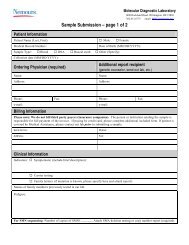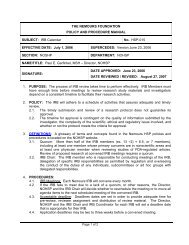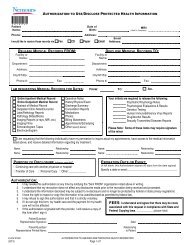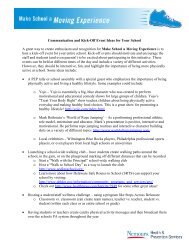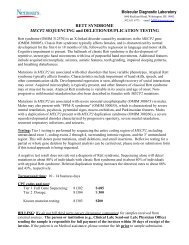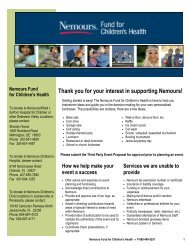Best Practices for Healthy Eating Guide - Nemours
Best Practices for Healthy Eating Guide - Nemours
Best Practices for Healthy Eating Guide - Nemours
You also want an ePaper? Increase the reach of your titles
YUMPU automatically turns print PDFs into web optimized ePapers that Google loves.
Seasonal Fruits<br />
& Vegetables<br />
Fresh fruits and vegetables are a delicious, healthy part<br />
of meals and snacks. While most produce is available<br />
year-round, it can be expensive when it is not purchased<br />
in season. Fruits and vegetables also taste better when<br />
purchased during their natural growing season. The chart<br />
below shows which fruits and vegetables grow best in the<br />
fall, winter, spring, and summer. When preparing food at<br />
your program, keep this list in mind and use seasonallyappropriate<br />
ingredients to save money. If a recipe calls <strong>for</strong><br />
a vegetable that is not in season, replace it with one from<br />
this chart that is. You can also use this chart to teach<br />
children about different fruits and veggies!<br />
Fall Winter Spring Summer<br />
September, October, November December, January, February March, April, May June, July, August<br />
Apples<br />
Broccoli<br />
Brussels sprouts<br />
Cabbage<br />
Chinese cabbage<br />
Cauliflower<br />
Celery Root<br />
Chicory<br />
Cranberries<br />
Cucumbers<br />
Dates<br />
Eggplant<br />
Fennel<br />
Grapes<br />
Greens<br />
Lettuce: head or iceberg<br />
Leaf lettuce<br />
Mushrooms<br />
Nuts<br />
Okra<br />
Mandarin oranges<br />
Pears<br />
Chili peppers<br />
Sweet peppers<br />
Persimmons<br />
Pomegranates<br />
Pumpkin<br />
Quince<br />
Shallots<br />
Spinach<br />
Winter squash<br />
Star Fruit<br />
Sweet potatoes<br />
Turnips<br />
Avocados<br />
Broccoli<br />
Brussels sprouts<br />
Cabbage<br />
Chinese cabbage<br />
Cauliflower<br />
Celery root<br />
Chicory<br />
Dates<br />
Fennel<br />
Grapefruit<br />
Greens<br />
Lemons<br />
Wild mushrooms<br />
Mandarin oranges<br />
Sweet oranges<br />
Pears<br />
Spinach<br />
Sweet potatoes<br />
Tangerines<br />
Turnips<br />
Asparagus<br />
Avocados<br />
Basil<br />
Beans<br />
Beets<br />
Berries<br />
Broccoli<br />
Cabbage<br />
Chinese cabbage<br />
Cucumbers<br />
Lettuce: head or iceberg<br />
Mangoes<br />
Okra<br />
Sweet oranges<br />
Papayas<br />
Peas<br />
Chili peppers<br />
Sweet peppers<br />
Radishes<br />
Rhubarb<br />
Shallots<br />
Spinach<br />
Summer squash<br />
Turnips<br />
Source: United States Department of Agriculture (USDA). Accessed August 10, 2010 http://healthymeals.nal.usda.gov<br />
Apricots<br />
Basil<br />
Beans<br />
Beets<br />
Blackberries<br />
Blueberries<br />
Boysenberries<br />
Carrots<br />
Cherries<br />
Collards<br />
Corn<br />
Cucumbers<br />
Dates<br />
Figs<br />
Grapes<br />
Green beans<br />
Limes<br />
Mangoes<br />
Melons<br />
Nectarines<br />
Okra<br />
Peaches<br />
Pears<br />
Chili peppers<br />
Sweet peppers<br />
Plums<br />
Raspberries<br />
Summer squash<br />
Tomatoes<br />
Watermelon<br />
<strong>Best</strong> <strong>Practices</strong> <strong>for</strong> <strong>Healthy</strong> <strong>Eating</strong> 39



